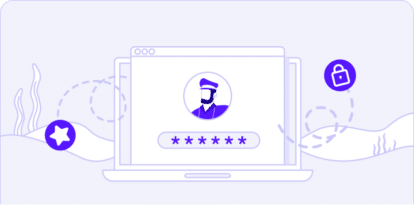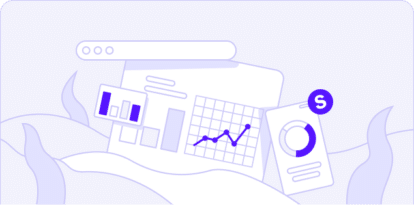2025 Predictions: Finally Solving Fatigue in Security and Operations

Fatigue in security and operations is not just about tired employees, but rather it’s analysts and operations staff that are faced daily, with an overwhelming volume of alerts (many of which are false positives), working long hours in often isolated, surely high-pressure environments. These teams are expected to identify and respond to cyber threats around the clock in real-time, leading to burnout, cognitive fatigue and human-error.
There are three factors, however, that are critical exposures that will significantly impact SecOps teams in 2025: cloud misconfigurations, the growing adoption of cloud technologies and distributed environments with containerized applications. These technologies all offer highly valuable benefits while simultaneously introducing complex risks that left unchecked could not only increase alert fatigue but the likelihood of security breaches.
- Cloud misconfigurations: As organizations expand to multiple cloud providers like AWS, Azure or Google Cloud, managing and securing configurations across various platforms will become increasingly complex. SecOps teams often lack visibility across unrelated cloud systems, which heightens the risk of unseen misconfiguration.
Cloud misconfigurations often happen when organizations fail to properly configure access controls, storage permissions or network settings within cloud environments. These errors can add up to significant and costly exposures that an attacker can quickly exploit. For SecOps teams, the scale and complexity of cloud infrastructure can make it exceedingly difficult to keep track of every setting, policy and user permission as the cloud environments are constantly evolving. - Increased adoption of cloud technologies: More companies are taking on cloud tech for its scalability, flexibility and cost benefits, and as such, SecOps teams are now faced with securing constantly changing environments. With the increased adoption of cloud-native services like serverless functions, container orchestration platforms and microservices, the security landscape has become more fractured with lack of visibility. More cloud technologies also introduced a shared responsibility model, which leaves SecOps teams struggling to define the scope of their responsibilities, leading to gaps in coverage.
- Distributed environments and contained applications: Containerized applications like Kubernetes and Docker have transformed application development and deployment, allowing for increased flexibility, scalability and portability. Transformations don’t come without challenge or risk. Containers are often stateless, but many applications require persistent storage, requiring SecOps teams to ensure that sensitive data remains securely managed. This exposure is difficult to secure due to requiring new monitoring and management tools and skilled human professionals. SecOps teams need to invest significant time, effort and resources into managing container security, which could lead to further burnout.
The Wave of the Future: How 2025 Could Be the Turning Point
With an increasing number of discovered vulnerabilities and affected assets forcing organizations to be selective in their responses, potentially leaving critical gaps unaddressed, we are approaching a tipping point where current security practices may no longer be effective. There’s no doubt that technological advancements will make even more considerable contributions in 2025 than they already have.
Artificial Intelligence (AI) to the rescue
The new year will bring a warm welcome to AI and machine learning (ML) in SecOps and is expected to play a major role in alleviating fatigue. For some organizations, AI is already being used in a triage capacity to help classify threats and automate incident responses. AI will also help improve the accuracy of threat detection and reduce resource fatigue by:
- Automating responses: Reducing human interaction to respond to every incident, AI-driven system can automate a wide-range of automated responses, from blocking suspicious IP addresses to isolating compromised systems.
- Predictive threat intelligence: AI can go beyond detecting known threats and anticipate new attack vectors, enabling preemptive measures that reduce the responsibility on human professionals.
- Contextual awareness: Integrating data from across security tools and IT systems is now done by AI, providing context to alerts and significantly reducing time spent triaging.
Collaborative automation and human augmentation
AI and automation will be a major component of reducing fatigued employees in 2025, however human expertise will never not be a strategic component. The key will be fostering human-automation collaboration by using tools that enhance human capabilities rather than replace them. When done methodically and implemented with training, organizations will see a reduced mental workload and improved efficiency.
An example of this collaboration is security analysts using AI assistants to interpret complex data and suggest possible actions based on patterns and historical outcomes. These assistants can even automate routine responses, leaving the final decision to the human professional, freeing up the team to focus on more critical tasks.
Self-healing systems and autonomous operations
In 2025 operations teams can look for more widespread deployment of self-healing systems and autonomous IT operations (AIops). These systems can identify problems and automatically resolve them without human intervention, reducing SecOps teams’ workloads.
Self-healing systems are capable of monitoring for anomalies, optimizing system performance, patching vulnerabilities and recovering from failures autonomously. With this type of automation in place, it would radically cut the number of manual interventions required, allowing operations teams to concentrate on more strategic tasks.
Key Takeaways
The next few years hold immeasurable potential for those working in cybersecurity and IT operations. By 2025, fatigue could become a thing of the past, thanks to a combination of advanced AI, automation, self-healing systems, and a cultural shift toward well-being.
These innovations will allow security and operations teams to work more efficiently, respond to threats more effectively, and, perhaps most importantly, reduce the mental and physical strain that has overwhelmed them for years.
The ultimate goal is clear: create a world where security and operations professionals no longer face burnout, but instead can thrive in their roles, supported by the tools, technological advancements, resources, and culture they need to succeed. As we approach 2025, this vision is closer than ever to becoming a reality.



